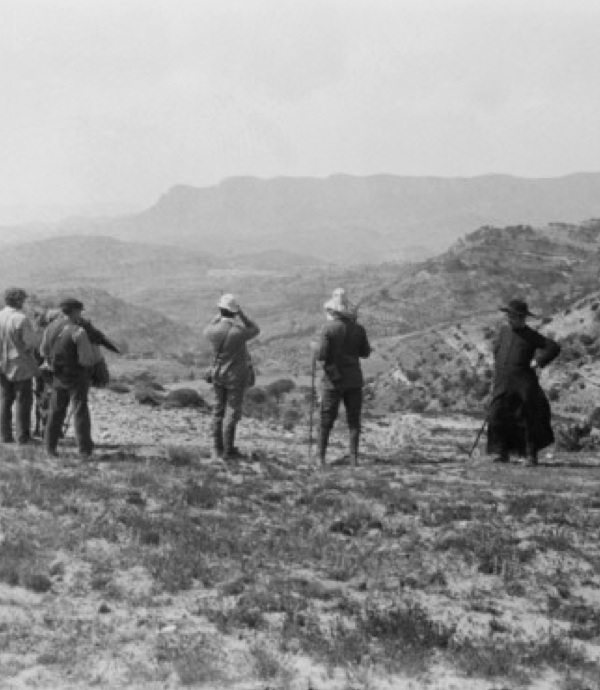Interest in medieval world in Catalonia began in the 19th century with the “Renaixença” cultural movement following the trend that began throughout Europe with Romanticism.
The first exhibitions of Romanesque and Gothic art were being held by the end of the 19th century and the first museums and collections were created.
With the aim of discovering and studying the Romanesque monuments in the country, the architect and historian Lluís Domènech i Montaner made several expeditions to the Pyrenees between 1904 and 1905 to study the Romanesque monuments, including the Romanesque ensemble of the Vall de Boí. His are the first descriptions, plans, drawings and photographs we have of the churches in the valley.
Three years later, in 1907, the Institut d’Estudis Catalans (Institute for Catalan Studies), led by Puig i Cadafalch, organised the “Missió arqueològico-jurídica a la ratlla d’Aragó”(Archeological-Juridical Mission to the Aragon Border Area) visiting the Vall de Boí during the first days of September. The documentation from this trip would be the basis for the Institute’s subsequent publications, including the third fascicle of the work “Les pintures murals romàniques”(Romanesque mural paintings), published in 1911, which included, among others, the ensembles of the Vall Boí.
A few years later, in the summer 1919, la Junta de Museus (the Museums Board) discovered that the frescoes of Santa Maria de Mur (Pallars Jussà) had been bought and removed, but was unable stop them being sold to the Museum of Fine Arts in Boston. To prevent a repetition of such serious events, a campaign was organized to remove the Romanesque paintings from de Catalan Pyrenees and transfer them to the Museu d’Art i Arqueologia de Barcelona. The first removal began in the Vall de Boí in December de 1919.

Strappo is the technique used to remove wall paintings.
It consists of applying several layers of cloth dampened with water-soluble organic glue to the painting. When the canvases are dry, they are removed from the wall with a chisel and hammer. Together with the canvas, the pictorial layers are removed. When the canvases reach the museum, the paint is transferred to a new support and the glue is diluted with hot water to separate the canvas from the paint.
With this file we propose you to relive the route of the 1907 Archaeological Mission to the discovery of the Romanesque churches of the Vall de Boí.
What did the Mission consist of? Who took part? Where did they go? What did they discover in the Vall de Boí?
We encourage you to discover the route on foot along the traditional paths that link the villages (Hiking Vall de Boí).
Have a good discovery!
Romanesque center of La Vall de Boí
C/ del Batalló, 5 – 25528 Erill la Vall – Tel.973 696 715
info@centreromanic.com
The Romanesque Center of the Vall de Boí reopens to the public with a new pioneering project at a national and international level with new stories and cutting-edge immersive technologies that will allow you to live new experiences.